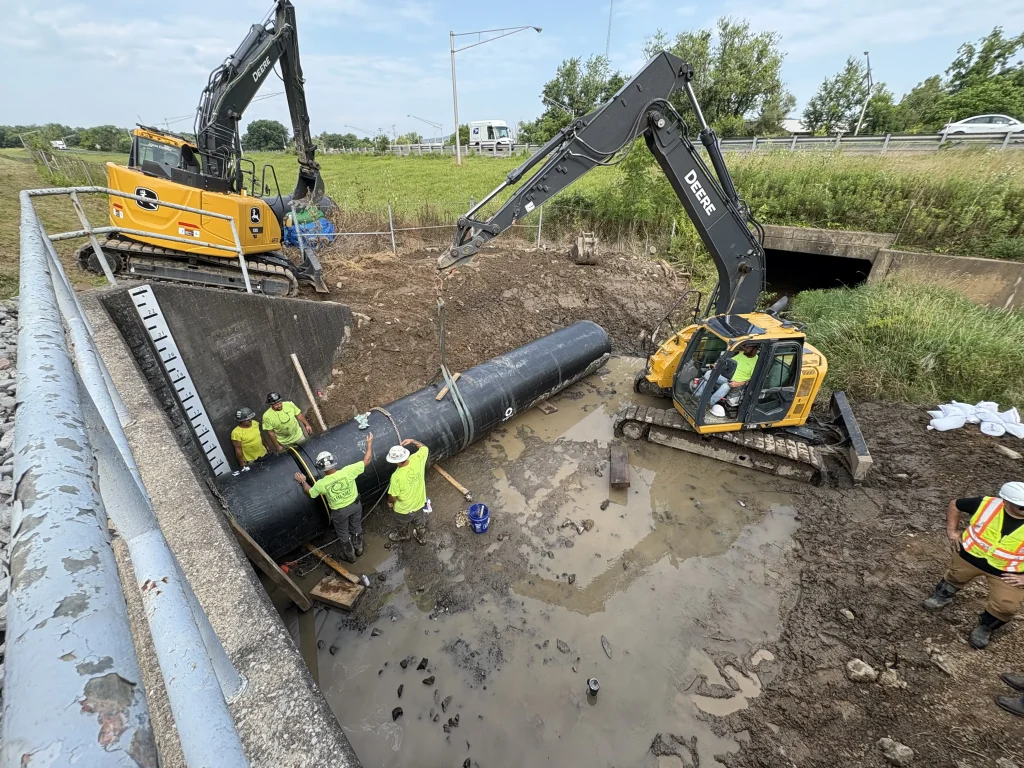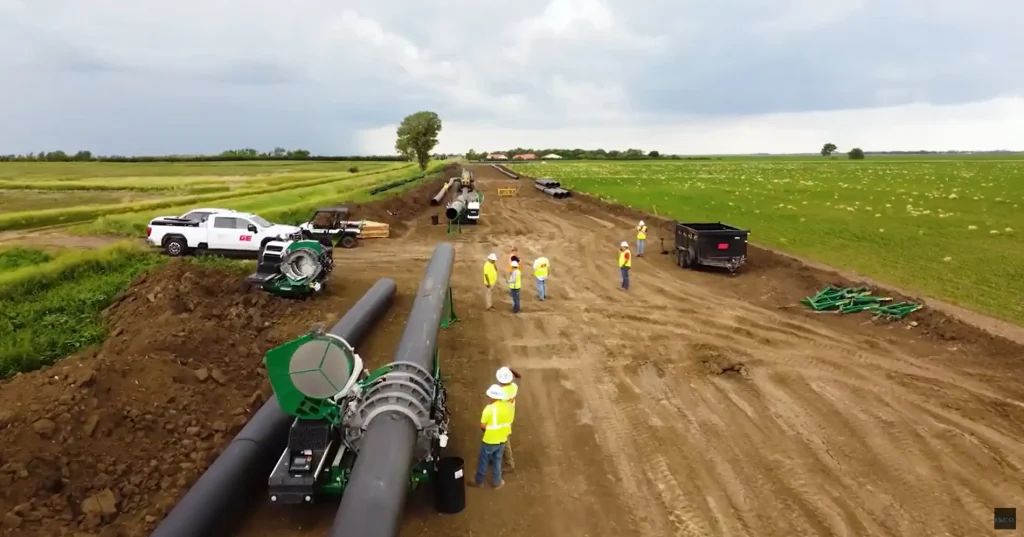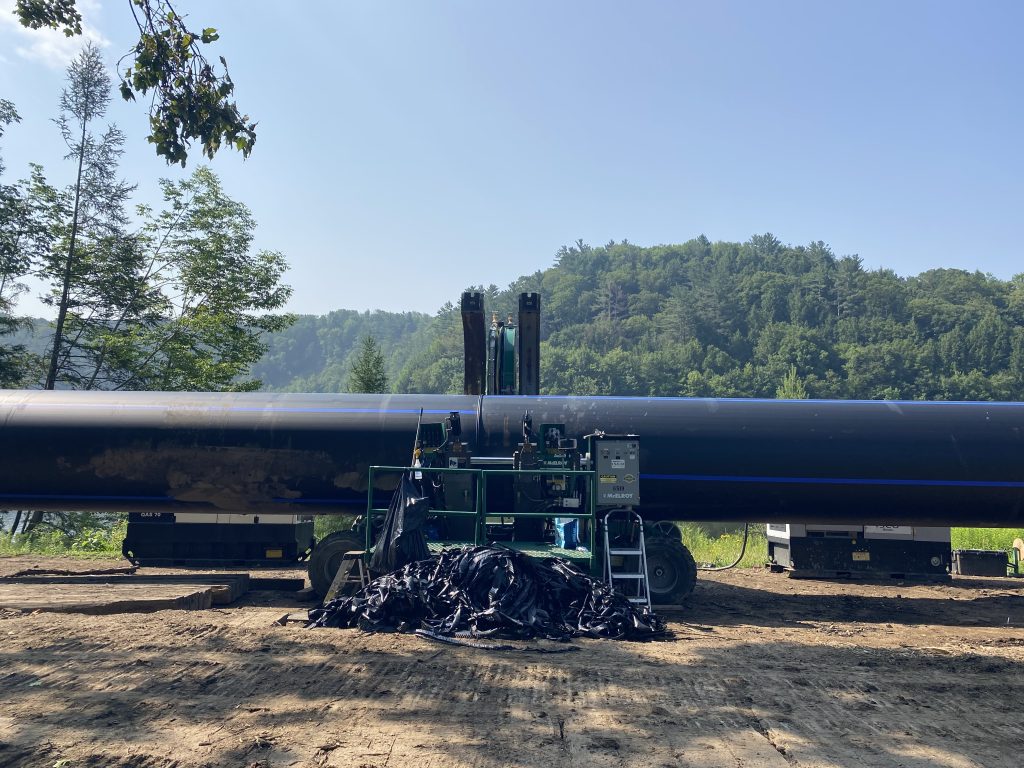Resources
Field Reports
Stormwater Management Pond Pipe Relined with the Snap-Tite Culvert Lining System
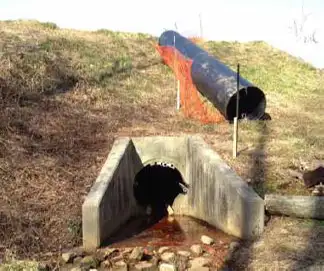
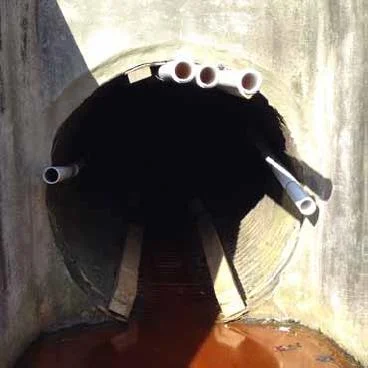
Problem
Stormwater management (SWM) ponds are common in Maryland and there is a push to improve them to meet current standards. These ponds were part of a design in all stormwater projects 20 to 40 years ago, so any development of any size that has a pond must be maintained. Updating the ponds to current standards is part of that maintenance; and often, the main spillway outlet pipe is part of the design to meet current regulations.
A stormwater management pond in Columbia, Maryland needed an upgrade to meet the Maryland Department of Environmental Protection (DEP) regulations. The main spillway pipe made of corrugated metal pipe had deteriorated and needed to be repaired or replaced. The large SWM pond is located in a very large and busy business park. Plus, the spillway pipe was deeply buried under a highly trafficked roadway. If traffic was disrupted due to construction it would interrupt the businesses and customers using the business park. Therefore, a method of repair such as digging and replacing the pipe was not an option. In addition, a dig and replace method would require digging a dam embankment, which could be costly.
Solution
The contractor on the project, Highway and Safety Services, Inc., worked with Snap-Tite representative Joe Nagy and Snap-Tite’s Maryland distributor Any Cary to solve this culvert problem. The contractor was familiar with and had used the high-density polyethylene (HDPE) Snap-Tite culvert lining system in the past. Also, Snap-Tite is an approved product with the Maryland DEP.
The Snap-Tite HDPE pipe system is a no-dig solution for repairing old culverts because it does not require extensive excavation and does not require road closures or disruption to traffic. In addition, no major equipment or training is necessary to install the Snap-Tite pipe. A unique feature of Snap-Tite is that it does not require fusion to join the pipe together. The ends of the Snap-Tite pipe are machined on each end. The male and female ends are “snapped” together, rather than fused. The system also has a longer life span than most conventional products.
After evaluating the condition of the culvert and its length and size, Snap-Tite supplied 170 feet of 36-inch HDPE pipe.
Installation
The Snap-Tite culvert lining system does not require any specialty equipment for installation. All the material that is needed to install the liner on site includes come-a-longs and chains. The come-a-longs and chains are used to snap the male and female machined ends of the Snap-Tite pipe together. The snapped pipe is then pushed inside the old culvert until it is fully lined with the new pipe. Then, the liner is grouted in place to fill in annular space between the liner and old pipe.
Conclusion
The contractor was able to complete this project quickly and efficiently because no excavation was required. The traffic continued to pass over the road while the spillway was relined.
